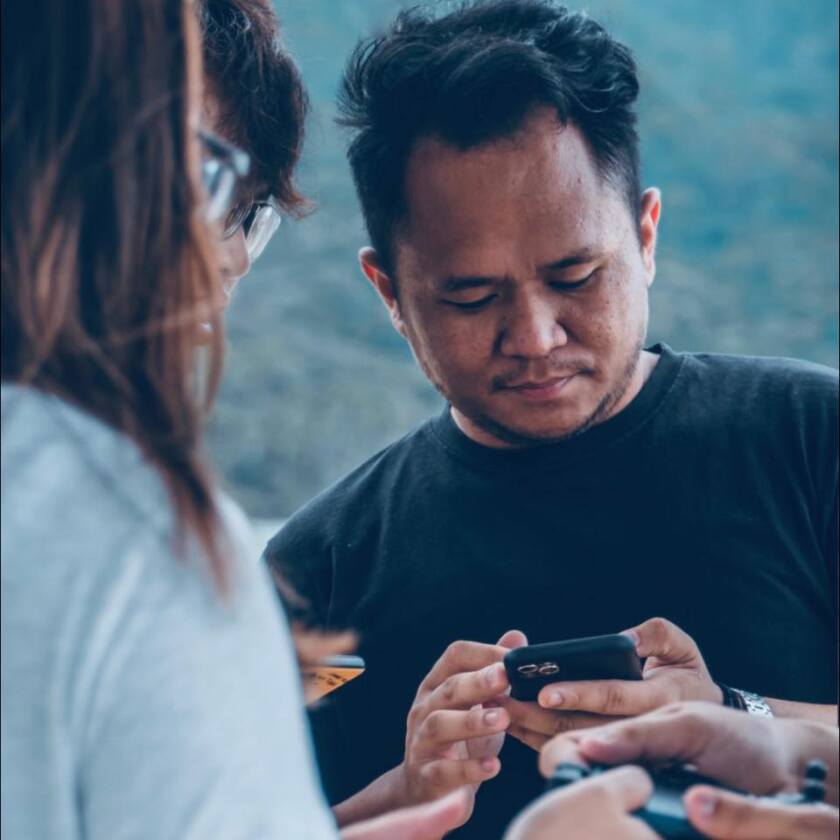BYUH alumni share how understanding diverse learning styles helped them better prepare for their future careers

More effective learning.
Better self-understanding.
Better career decisions.
According to LinkedIn, these are some benefits to knowing which learning style works best for individuals in academic settings or workplaces.
LinkedIn explains, “There are many models and theories of learning styles, but one of the most widely used is the VARK model, which identifies four main types of learners: visual, auditory, reading/writing and kines- thetic.”
LinkedIn describes a visual learner as someone who prefers to see information in images, graphs, diagrams, tables or charts. Contrary to a visual learner, a reading and writing learner prefers reading and writing information. An auditory learner, according to LinkedIn, likes to hear information in pod- casts, lectures, discussions or music. Lastly, a kinesthetic learner excels in learning through hands-on activities such as touching, moving or experimenting, LinkedIn says.
A journey from classroom to career
Rizal Takin, a BYU–Hawaii alumnus with a double major in finance and business education from Malaysia, said his academic journey and career path resulted from his adaptability to different learning and teaching styles.
He said he started his career as a substitute teacher in Mukah, East Malaysia, but then transitioned to his job as a tax officer in Kuala Lumpur, West Malaysia, after seven months.
Takin said, “I found that kinesthetic and visual have been effective methods in my studies. I comprehend things better when they involve practicality and body movement.” Takin also emphasized that incorporating infographics and images allowed him to grasp the core essence of learning content.
While transitioning from a student to a teacher, Takin said he initiated ice- breaking sessions to create connections with students, incorporated hands-on activities for engagement and constantly sought input from students.
Takin described how he could not escape challenges as a teacher, including students’ reluctance to participate in class and a lack of interest in homework. “To address these issues, I paired them with a student who showed interest in activities and had them guide me," Takin said.
He shared how he encouraged students to first work with close friends to create a comfortable environment for sharing ideas and improving communication.
Annalise Edwvijis Tan, a recent BYUH TESOL graduate from Arizona, said she’s on a journey to obtain her teaching license in Hawaii after teaching English for Speakers of Other Languages at Ke’elikolani Middle School in Honolulu during her practice teaching period.
As a kinesthetic and visual learner, Tan said she recognized the impact of interactive, hands-on approaches on her learning experience. She explained how assigning specific roles to students that aligned with their strengths, such as having students lead movements through speaking and writing, ensured every kinesthetic or visual learner was engaged in the learning process.

Meeting individual needs
Tan said she advocates for understanding and implementing various learning styles to meet the individual needs of students. She explained, “Teaching can’t be one-size-fits-all because everyone learns differently.”
Tan highlighted her strategy of incorporating diverse techniques in small ways throughout her lessons. She said, “I plan to use this to my advantage when preparing my instruction to encourage learners to interact meaningfully with each other. I want them to view language as something they create rather than a rulebook to follow."
Recognizing the diversity in learning styles, Takin also emphasized how it enhanced his understanding as a teacher and helped him deliver lessons according to students’ unique strengths. “Different people have different approaches to learning. It is a considerable advantage if students can master various learning styles as they make learning more engaging and exciting,” Takin said.
Tan expressed her appreciation to her mentors and professors in the education and TESOL departments at BYUH. Tan refined her view of teaching as a science that can be analyzed and improved with her professors’ guidance, she said, striking a balance between an emotion-driven approach and a more structured approach.
